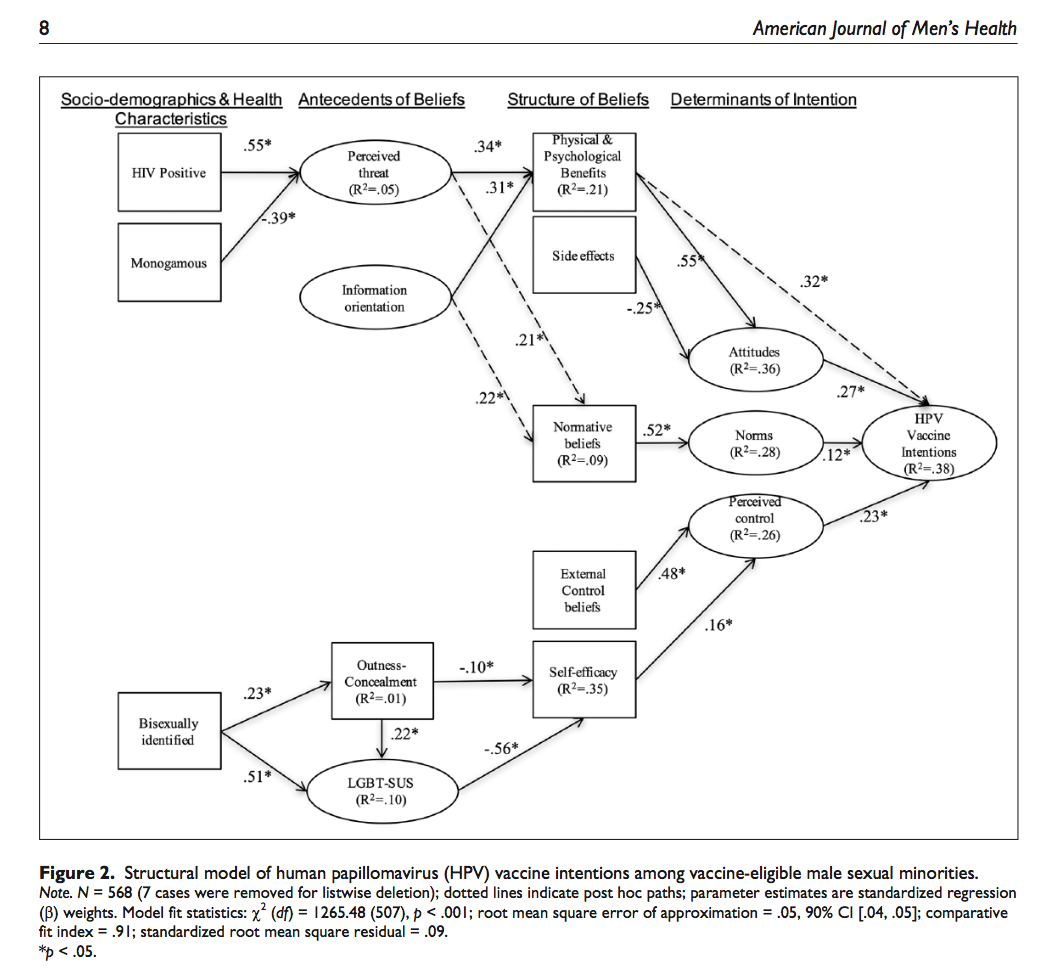Protect OUR Butts Study
The Protect OUR Butts study was a multi-phased mixed methods project that sought to provide a nuanced understanding of the issues important to young gay and bisexual men when making decisions about HPV vaccination.
Young gay and bisexual men represent a distinct group with regard to HPV prevention for multiple reasons including their disproportional risk of HPV-related anal cancers, the limited herd immunity conferred to them through the vaccination of girls and women, their current low vaccine uptake, and their public health relevance as a socially marginalized population.
Through both qualitative and quantitative methods, I was able to construct a theoretical model of key factors involved in HPV-vaccine related decisions among gay and bisexual men between the ages of 18-26 (these men are within CDC’s current routine HPV vaccination guidelines). This model is thoroughly described in a recent publication in the Health Education Journal and briefly summarized in the following figure.
This model is based on Fishbein’s Reasoned Action Framework and expanded to address issues specific to male sexual minorities when making decisions about HPV vaccination. You’ll notice the importance of sexuality specific issues, as experiences and expectations of uncomfortable or discriminatory interactions with healthcare providers have direct impact of the way these young men think about sexual health services. In a followup study, I tested this model on a larger sample of young gay and bisexual men. The results of the final structural equation model are summarized in the following figure. The full study can be found in this issue of the American Journal of Men’s Health.

In this study we identified a number of modifiable psychosocial and environmental determinants of HPV vaccine intentions. These determinants can be used to target and tailor behavioral interventions for this priority population and inform the content of patient–provider conversations about this vaccine. Such interventions are critically needed in the prevention of anal and other HPV-related cancers, as well as to mitigate HPV-related disparities among gay and bisexual men.
![Model of HPV vaccination of male sexual minorities (gay, bisexual and other men who have sex with men [MSM])](http://www.chriswheldon.com/wp-content/uploads/2016/08/Screen-Shot-2016-08-04-at-2.34.44-PM.png)